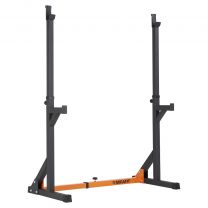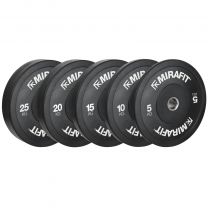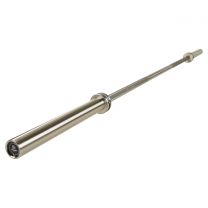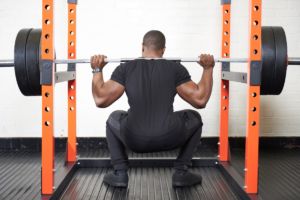How To Squat Heavy Alone
How To Squat Heavy Alone
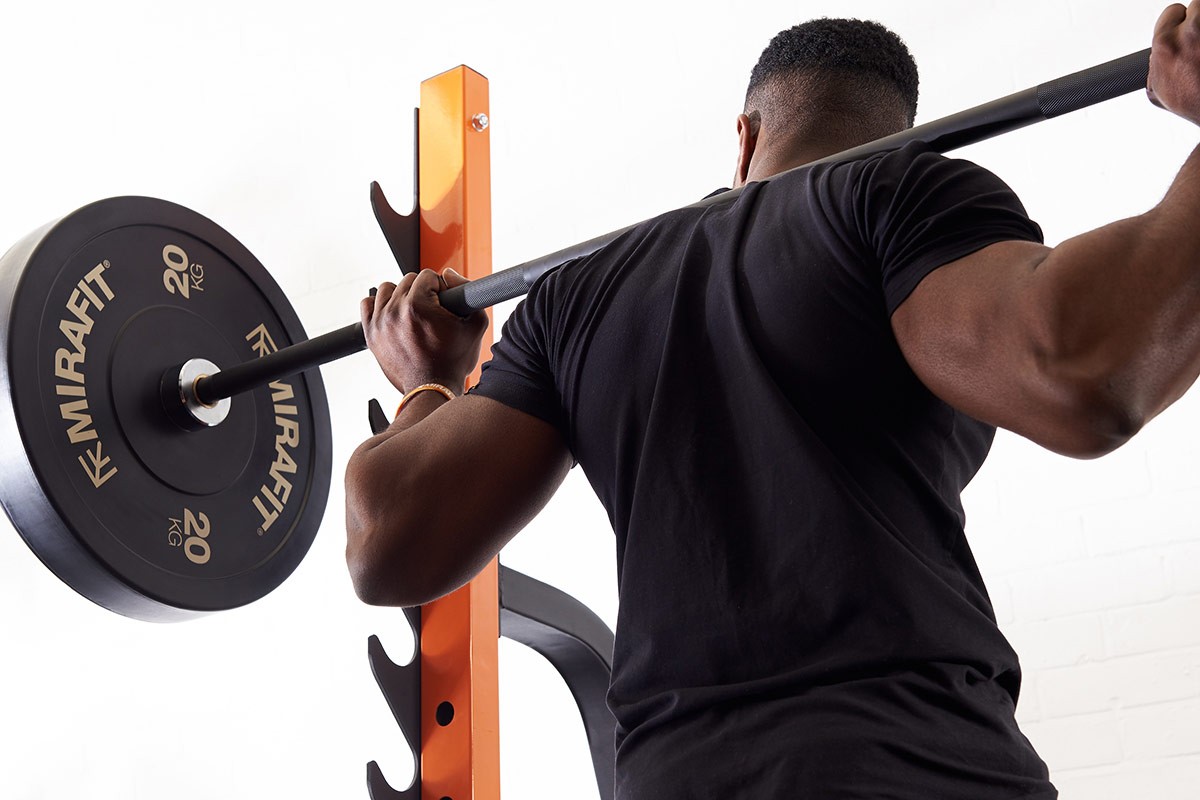
Doing squats with a heavy weight load, with no safety bars and no spotter – is a bad idea. And we don't mean in a 'eating too many pancakes is a bad idea' kind of way. We mean in a 'this equals death' kind of way.
Seriously, if suicide bails are a routine for you (where you attempt to get out from under the bar quicker than it can flatten you) then it's time to rethink your squat regime.
ARE SQUATS DANGEROUS?
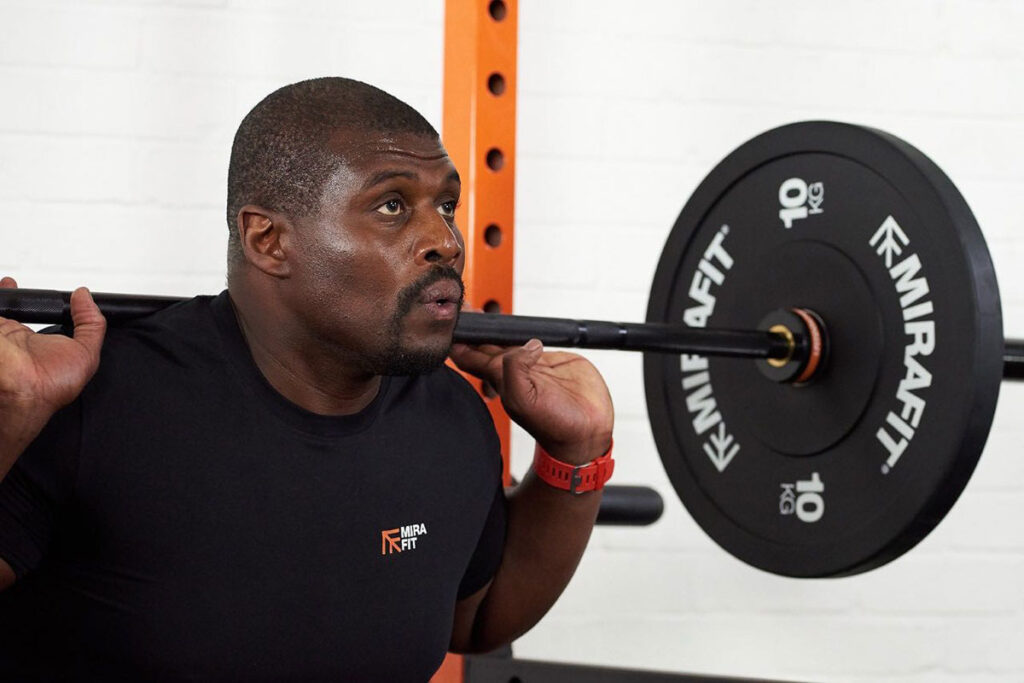
Without safety bars, doing squats can be dangerous. Even if you don't class your weight load to be particularly heavy – if it's heavy for you and you've taken on too much without learning the proper form, you can end up in trouble pretty quickly.
Squats really are a balancing act. And the more weight you load up onto your shoulders, the more unstable your centre of gravity.
And just because you feel secure doing squats with a comfortable weight, doesn't mean you will feel just as secure when you start upping the weight.
Any imbalances in your flexibility or strength, or even any issues with your technique are quickly magnified the more you lift. And what seems like a smooth weight trajectory, becomes more and more of a feat as you progress.
HOW TO SQUAT HEAVY ALONE
There's no reason why you can't squat heavy alone. But it's really important you have the right safety equipment so that you can escape death and live to see another day in your garage gym.
Ready to load your barbell?
HERE ARE OUR TOP FIVE TIPS FOR STAYING SAFE WHEN DOING SQUATS:
1 - GET YOUR TECHNIQUE RIGHT
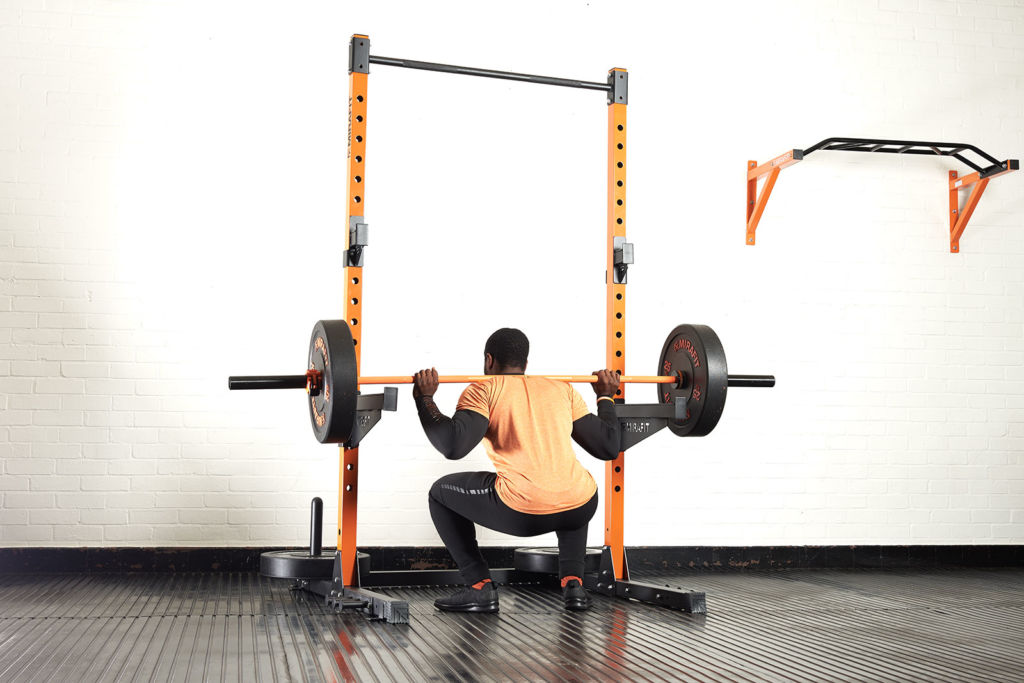
If you're having issues with stability when you squat heavy, you need to address the issues in your form first, before you start adding in the weight.
The main issue will be to check that your posture is correct and that your bar path is straight. If your bar is being pushed too far forward or if you're back is at too much of an angle, you will topple forward.
It also might be worth checking if you're pushing your weight back correctly. Your tibea should be ideally vertical. If this is an issue for you, try doing some box squats so that you can confidently push your weight back into the squat without losing your balance.
Find out more on squat form in our blog on How To Squat.
2 - WORK UP TO HEAVY WEIGHTS

Doing squats at your one-rep max weight load should never be the first thing you do when you head over to the squat rack.
Firstly, you need to be properly warmed up to reduce your risk of injury during your workout. Then you need to work up to your heavy weight. You might even want to just squat with the bar before you add any weights to check your form. Then start low and work up to your maximum weight load.
By doing this you'll be able to feel any issues along the way and also identify where a good stopping point is. Remember, no one cares how much you're carrying when you squat. So forget trying to impress, just work on getting it right.
3 - USE A POWER RACK

Power Racks are just as good as squat racks when it comes to doing squats. And the main feature that you're looking for here is the safety bars.
Not only will they catch the bar if you fall, but the good thing about power racks is that the frame also helps control the bar at the point of failure.
Make sure you have the spotter bars at the right height before you load up your barbell. You want them around one inch below your point of failure. This is so they don’t get in the way of your training, but they're not so low that they will hit you if you lose your grip.
4) LOADING HEIGHT

Getting your loading height right is also really important. You actually want to have the barbell just below your shoulder height. This means no going onto your tip toes to take the bar off the rack. If the rack position is too high, you're at risk of losing your stability when you start as well as not being able to re-rack the bar when you finish due to fatigue.
5 - HIP AND ANKLE FLEXIBILITY
A lot of your stability while doing squats doesn't come from strength, it comes from having the correct posture and flexibility. Having this allows you to maintain the correct, straight bar path in the first place.
Stretching, using a foam roller and breaking at the hips properly as you go down will all help you stay put while doing squats.
Investing in some proper shoes will also help and if your ankle joints are particularly tight, investing in a Squat Ramp is also a good idea.
So, get your form right, practise with just a bar and train using a power rack or squat rack to help you stay safe while you do squats.
You can read our complete guide to squat racks here
For more content, follow us on Instagram, YouTube, TikTok, and on our official Mirafit Facebook page.
Enter your email to signup to our newsletter
Tags: Equipment > Power Racks & Cages ; Equipment > Squat Racks ; Exercise Type > Strength

